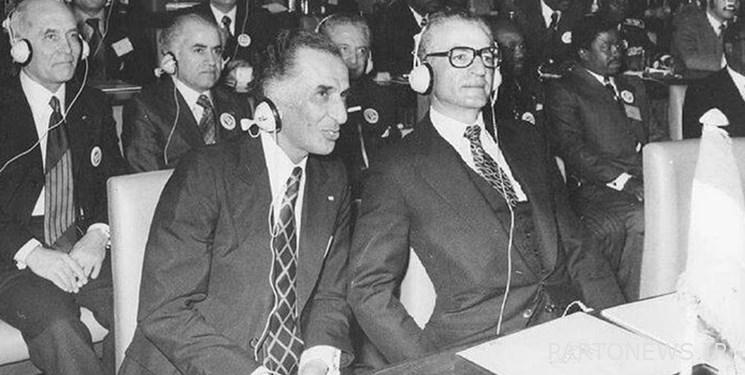Iran is stable; 44 years of honor Demystification of 6 million barrels of oil production/unsustainable production during the Shah’s time damaged the reservoirs

According to the economic reporter of Fars news agency, although the nationalization of the oil industry during Mossadegh’s era meant the end of concession contracts in Iran’s oil industry, with the August 28 coup, a new form of Iranian oil colonization was created in the form of a consortium agreement between the Iranian government and a consortium of oil companies. International began with a 50:50 share to exploit Iran’s oil resources, but with the revolution, the equations in Iran’s oil industry changed completely.
However, there are still myths about Iran’s oil production during Pahlavi’s time in public opinion, and it is worth checking their authenticity. One of these myths is the daily production of 6 million barrels of oil during the Pahlavi era and the significant drop in production after the Islamic Revolution, which is discussed in this report.
* Unsustainable production of 6 million barrels of oil for just two months
Figure 1 shows Iran’s production of oil, condensate, gas liquids in the last 56 years according to the British Petroleum report. According to statistics, Iran’s production in the years close to the revolution was more than 5 million barrels per day, but with the occurrence of the Islamic Revolution, the amount of production suddenly dropped due to the departure of foreign advisers, and despite the re-increase of production by Iran’s operational and technical forces, it never It does not return to previous levels.
Image 1
But what is the story? To analyze the process of Iran’s oil production from a technical point of view and regardless of political orientations, we can pay attention to three points: The first point is that the production of 6 million barrels of “oil” in Iran during the Pahlavi period took place only for two months and not more, as a result, when the production is not “sustainable”, it cannot be a basis.
Hossein Nuruddin Moussa, an experienced expert on the oil-rich regions of the south, said in an interview with the economic reporter of Fars News Agency: “At that time, we were not sanctioned, and all powerful western companies were present in Iran, and our fields were in their youth and at their peak, but They were able to produce 6 million barrels only for two months. After two months, production dropped from the fields and our important reservoirs such as Maron and Gachsaran were damaged and even the first salt well was observed in Ahvaz.
* Iran’s unsustainable oil production during the Pahlavi era damaged the country’s reservoirs
The second point is; During Pahlavi’s time, oil production was carried out in an unsafe manner. In terms of reservoir engineering concepts, maintenance production is said to be production that has the highest production rate while maintaining two features; First of all, this production should be able to be planned for the long term, and in the next stage, it should be able to recover maximum oil reservoirs, something that did not happen during the Pahlavi era and foreign consortium control over the country’s oil resources.
Seyed Ali Beheshtian, one of the senior politicians and managers of Iran’s oil industry, in a conversation with the economic reporter of Fars news agency, referring to the state of the administration of this industry before the revolution, says: the production and administration of the major part of the oil industry and oil reservoirs since the beginning of the exploration and production of the first oil well In Suleiman Mosque, it was in the hands of foreigners until the revolution. The role of the National Iranian Oil Company was not very prominent before the revolution.
He added: In the oil crisis and the Arab oil embargo against Israel, Western countries had become highly dependent on Iranian oil, and in such conditions, maximum and even “non-maintenance” production from Iran’s fields, especially the Maroon field, caused damage to Iran’s oil reservoirs. Because the West’s high need for oil required maximum production to continue regardless of its side effects.
* Damage to Iran’s oil tanks for the benefit of Israel
Referring to the unsustainability of oil production during the Shah’s time, Nuruddin Musa says: Before the revolution, in the upstream part of the oil industry, decisions and formulation of production plans were made by foreign companies. Even in the discussion of the Arab-Israeli oil war, they forced the Shah’s regime to move towards the production of 8 million barrels per day, even if it is in a non-protective manner.
He added: According to this production plan, Iran’s oil production should have increased by 7.2 million barrels per day from the land and 800 thousand barrels per day from the continental shelf and the sea, but this plan did not work in Asmari Ahvaz, Maron, Gachsaran and Aghajari reservoirs. It was natural. Despite the numerous drillings on land, the flow rate of the oil wells was decreasing, and an irreparable pressure drop was introduced into the country’s reservoirs.
Nuruddin Moussa said: In the end, they were forced to reduce the onshore oil production plan by 1.5 million barrels and revise it to 5.7 million barrels per day. Secondly, this amount of production was carried out in an unsafe manner and our large reservoirs were damaged, and if we continued with the same discharge rate, we would have problems in producing the oil needed by the country from 1377 onwards.
According to the documents of the Southern Oil-bearing Zones Company, before the victory of the revolution, Iran’s oil production was between 5.4 and 5.6 million barrels per day, and if the emptying rate and unsustainable production from the country’s reservoirs continued until 1377, the oil production in the country’s land areas would decrease reached 2.5 million barrels per day, while the daily production in dry areas in 2017 was about 3.5 million barrels per day.
* The effect of the youth of Iran’s oil reservoirs on the high production of oil during the Shah’s time
The third point is that all oil tanks have a first half of life and a second half of life. It is natural that during the Shah’s time Iran’s oil reservoirs were young and their production potential was high and they had high pressure. But now Iran’s large oil reservoirs are in the second half of their life and are so-called in the period of flow reduction and do not have the production capacity of the past.
Nevertheless, the total cumulative production of oil before the revolution was about 26.2 billion barrels, but after the revolution, the total cumulative production of oil from the oil-rich areas in the south was 44 billion barrels. As a result, the high production in the Pahlavi and youth eras was a natural occurrence and is not considered an achievement.
In total, for three reasons: “the short production period of 6 million barrels during the Pahlavi era for only two months”, “unsafe oil production during the Shah’s era which caused damage to the reservoirs” and “the youngness of the oil reservoirs during the Pahlavi era and the pressure drop during the current one”, basically comparing the oil production number between the previous and the current government is not very correct and by the way, it is also seriously criticized by oil experts due to the non-maintenance production aspect during Pahlavi’s time.
The end of the message/T 697
You can edit this article
Suggest this article for the first page

